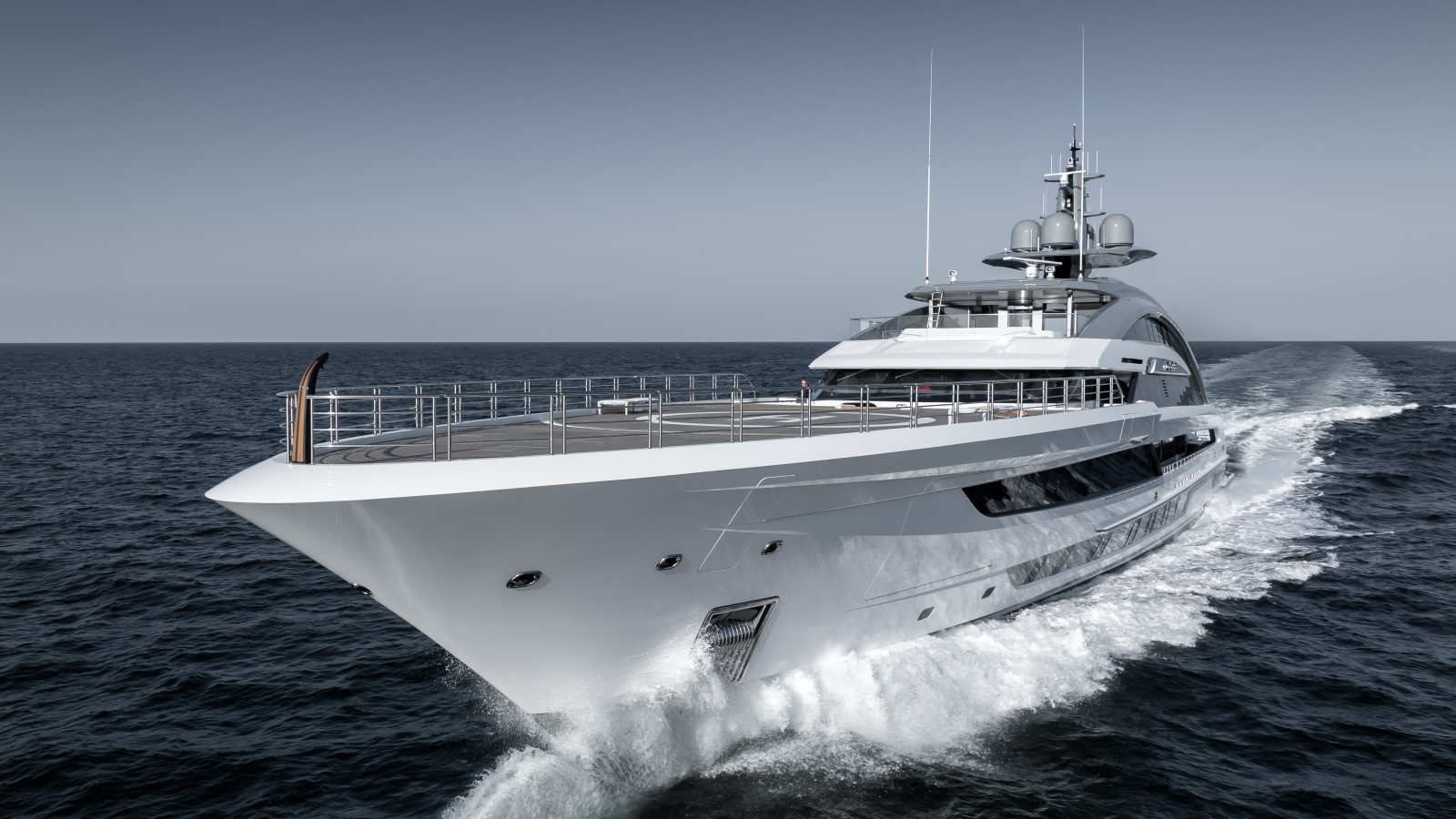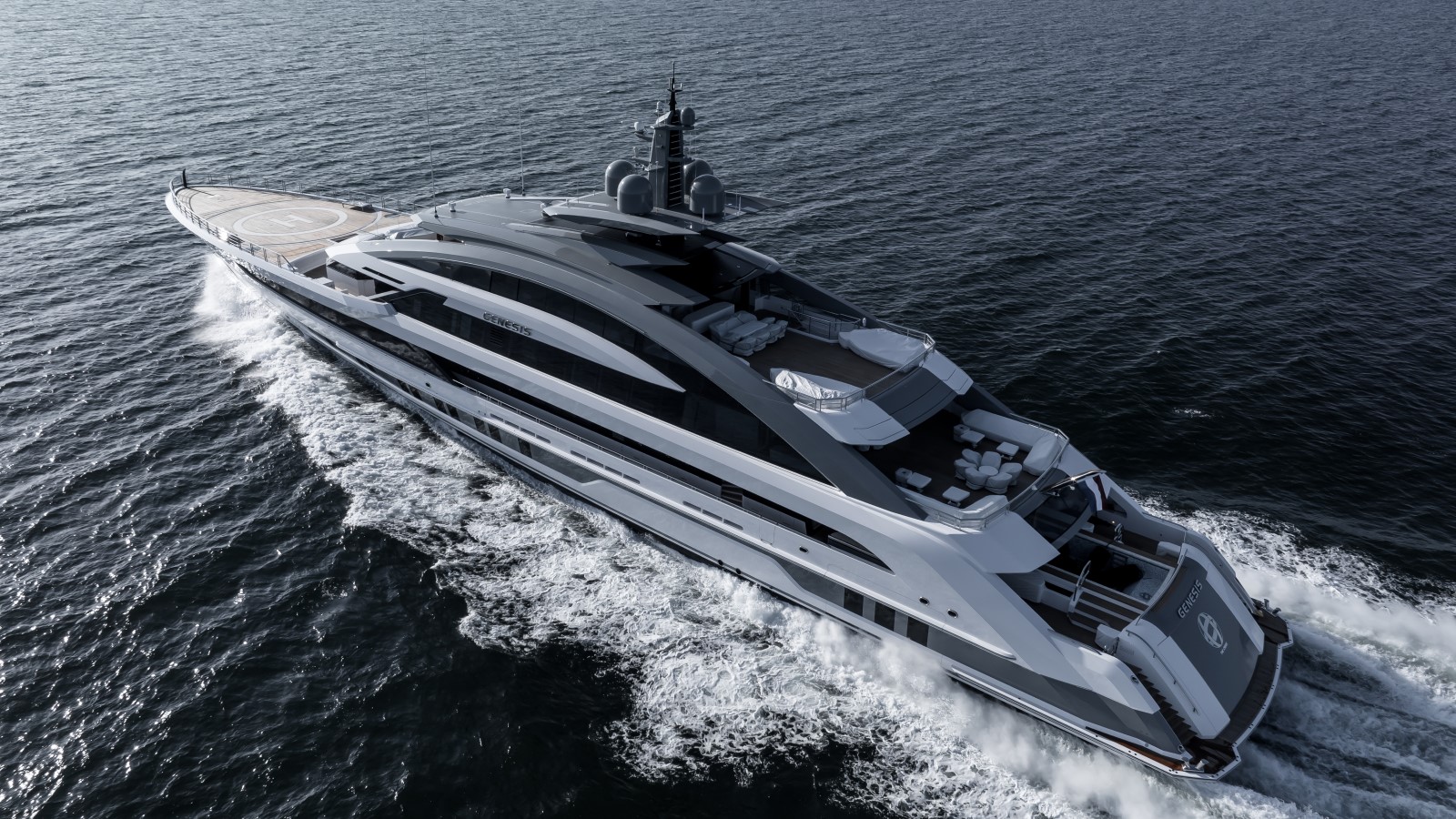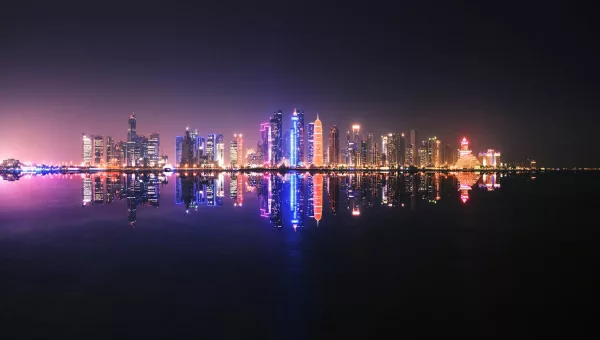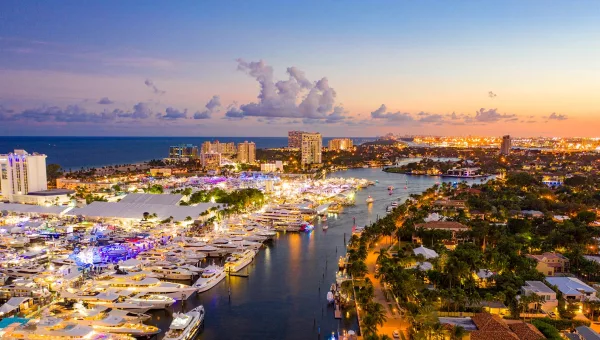Innovative hull monitoring system takes the stress out of yachting
Heesen has broken new ground in the engineering field with a unique system for monitoring hull stress. Its application in the yard’s new flagship gives profound insight into shearing and bending forces in the hull and provides a valuable new tool in assessing both safe speed and comfort aboard.
The system emerged out of the work to build right at the limit of what the Oss shipyard can accommodate: an 80.7m superyacht, delivered in September 2023 as Genesis. Earlier analysis by Heesen’s engineering team had established that the dimensions of the build shed permitted a maximum length of 83m with a 13.6m beam. Genesis is 13.4m across the beam.
Besides the boat’s great length, speed was the other key attribute desired by the owner. Indeed, that was one reason he came to Heesen – a yard whose long experience of building fast aluminium yachts is widely recognised. The demand on the table was for a yacht capable of speeds up to around 30 knots, and that naturally meant that a lightweight aluminium build was the only option.
All this raised an engineering challenge for Heesen. The hull had to permit fast semi-displacement operation, efficiently converting power from no fewer than four gigantic 4,895hp MTU 20V4000 engines. But it also had to be low draught, in order to obtain the maximum volume above the waterline and still fit under the various bridges and locks that lie between Oss and the North Sea. Such low draught reduces the longitudinal stiffness of a boat, so the team had to find another way to add that strength back in.
“We came up with this kind of backbone principle, where you add extra material where it’s most effective for strength and stiffness,” explained Heesen’s manager of shipbuilding engineering, Jos Verbruggen. “Our modelling indicated that the strength of the beam comes from the upper and lower part – the part in between is not so important. So we had to reinforce areas in the hull connection to the deck and in the keel.”
Being renowned for its precision, quality and rigour, Heesen was not content simply to rely on the predictions of hull strength obtained by applying the class rules from Lloyds. The engineering team had to be certain. Furthermore, the owner’s team was asking for some way of keeping an eye on the hull integrity.
“As there are not many fast aluminium boats built, the owner’s rep wanted to have a sort of insurance that nothing bad was happening to the hull,” says Verbruggen. “He managed to get an extra paragraph added to the building spec for a monitoring system capable of showing the forces in the boat and warning in case the captain was sailing too fast, or in too rough conditions.”
Early ideas were for a kind of traffic light system, where orange might mean slow down and proceed with caution and red would mean shutting down or returning to port. But there were no off-the-shelf solutions for this, so the team had to think creatively, and brought in the heavy-lifting expertise of Hydrographic and Marine Consultants to help them.
First of all, though, they wanted to know what the real-world stresses would be at different speeds and in different conditions. Enter Sjoerd van Herk, Heesen’s experienced senior naval architect. He decided that the best way to proceed would be to tank test the chosen hull design under a range of simulated conditions, harvesting a wealth of revealing data in the process. They went first to Southampton’s famous Wolfson Unit, where a painstaking 3.6m model of Genesis was built for testing.
“The model was literally cut into four loose parts and connected together with a measurement system that can measure the bending and the shear forces. And that’s the only thing that keeps the four parts together,” says van Herk. “You have to imagine the boat is self-propelled and remote controlled, packed with electronics and batteries and stuff and you have to imagine that the centre of gravity and inertia must also be to scale. It was a very big challenge to make the model like that, but they did a good job.”
As well as using the Wolfson Unit’s tank, the team also took the model to the nearby towing tank run by defence contractor Qinetiq. Wave machines in this vast 120m by 60m pool allowed them to very accurately measure shear and bend in different wave heights, and at different angles to the waves. The results were fascinating.
When plotted on a complex graph, van Herk was able to show that the stresses on the hull and deck of the yacht fell within the predictions of the class society – in all but one instance. “All except for the one with 20 knot boat speeds and 4m wave heights,” he says with a wry smile. “That’s quite an extreme condition, so you can easily decide you have to go slower in those wave heights.”
The team took these results back to the yard in Oss and got to work crunching the numbers. Running the read-outs from the tank testing through a Finite Element Analysis programme, they determined where in the boat was most subject to stress. This gave the most appropriate positions for the stress sensors, which had to be installed on bulkheads before the outfitting stage. There are 12 in total from the bulb of the bow to the point where the superstructure connects with the main and upper decks. The crew can consult the readings on a handy scale that runs from green to red, indicating where problems might be developing.
But they didn’t stop there. The next step was to plug the results into passage simulation software called SafeTrans, which is backed by a detailed database of wave conditions. They plotted a course from Gibraltar to Fort Lauderdale and simulated 300 crossings in a range of different conditions from flat calm to hurricane-force winds.
Ton Bos, director of Hydrographic and Marine Consultants explained the thinking. “Based on that, we combined the strength analysis and the accelerations into a hull-monitoring system, taking into account green water on deck, propeller immersion, acceleration. Altogether, we put it into a polar diagram to show you the limitations in different environmental conditions.”
Wave periods are considered here, so that short 4m waves in the Baltic are recognised to take a greater toll than the long 4m swells of the open ocean. The system can see that it is safer and more comfortable in a long wave period than a short. And not simply for the boat itself – also for crew and guests. The smartness of this system is that its deep understanding of what causes stress to the structure of the boat is also a good predictor of what makes life aboard uncomfortable for crew or guests. In essence, the system can tell you when seasickness is a risk.
“We combine it all into one polar showing, for example, that in head seas, you could make maximum speed, but in critical situations like beam seas you must slow down because roll can be a problem,” said Bos.
The uses of this information are many. Designers can test the comfort of their hull shape, for instance. Crew can accurately predict what conditions and headings are likely to cause damage to the boat – both seen and unseen. “It helps crew to make decisions to reduce speed; support for safe and economical navigation,” continues Bos. “It is also useful to have hard proof when people charter the ship. The captain can say, ‘we are not going to sail because with this weather forecast, you will all be seasick and cannot enjoy the Champagne’.”
It is an intriguing proposition, and one that is bound to have other owners pricking up their ears. And it could become even more capable in the future, according to Bos. He says the next step is a kind of virtual sensor, where machine learning is used to accurately predict stress measurements at points in between two physical sensors. Another useful development would be to use the sensors to feed real-time observations about sea state into weather forecasting models.
To date, Genesis is the only fast aluminium superyacht to employ such technology. But now that the design and engineering work has been done, it is likely to feature in many more of Heesen’s bespoke yachts in the future. After all, who wouldn’t want to know where the boundaries lie? In the future, it could even be that yachts with this system installed will be able to run for longer periods between hull surveys.
Less time in dry dock and more time exploring the oceans – now that really would take the stress out of yachting!
Box-out: Genesis
Surpassing Heesen’s previous giants Galactica Super Nova (70m) and Illusion (65m), Genesis is the yard’s flagship by a clear margin. Measuring 80.70m on deck, she boasts a top speed of 29 knots courtesy of four MTU engines putting out more than 14MW of power and some slick low-drag hull design from van Oossanen.
The yacht quite naturally features sporty lines. Winch Design has given her a dynamic, raked-back look with minimal overhangs and striking curved superstructure picked out in dark grey. Extensive use of glass, often with a sculptural curved finish, gives her a timeless look.
Working to a strict 13m height limitation, Heesen, Winch and interior designer Sinot have come up with a compact four-deck layout, including a partly open sun deck up top. As ever with Heesen’s larger yachts, the spectacular hardtop and mast was attached only once the yacht had passed beneath the six bridges that lie along the route to unrestricted waters.
Six guest cabins include a spectacular owner’s suite forward on the main deck, but there are a host of indulgent features throughout the boat. A touch-and-go helipad at the bow transforms into an outdoor cinema, with opulent foredeck sofas. The large pool aft on the main deck has a glass bottom which casts dappled light on the beach club below.
Sinot has developed a calming, neutral interior dotted with vivid splashes of different blues. In a boat with so many exciting features, the jewel in the crown is undoubtedly the beach club, with its fold down platform and sides. Here, Sinot imagined a backlit onyx bar and central seating that simply radiates appeal.
Share
COME AND MEET US: YOU’RE INVITED!
Headquarters
Ruud van der Stroom Chief Commercial Officer
| Robert Drontmann Sales Director
| Eckly Hendriks Sales Manager
Sara Gioanola PR & Press Office Manager
Heesen Yachts Agents
Thom Conboy Agent North-America, Mexico, Bahama's & Caribbean
| Hisham Abushakra Agent for the Middle East region



